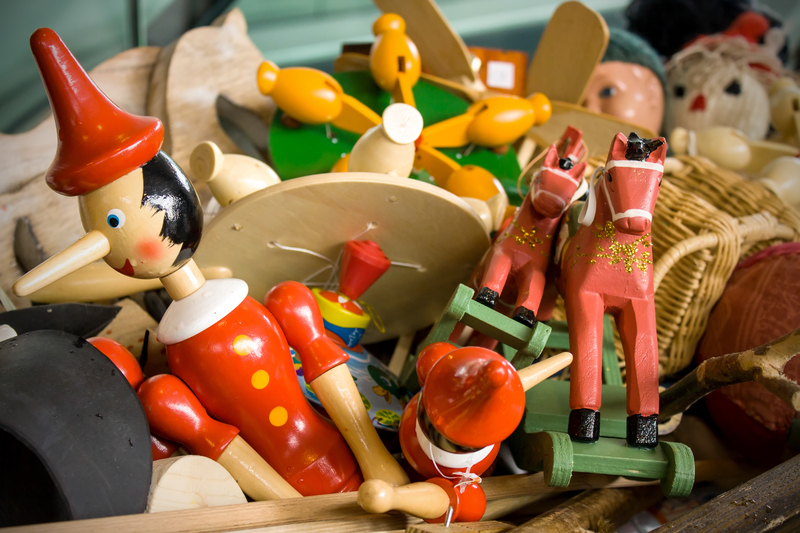Protect the Planet with Proper PPE Waste Management
The surge in use of Personal Protective Equipment (PPE) in recent years--particularly due to the global pandemic--has both protected human health and generated a significant environmental challenge. Masks, gloves, gowns, and face shields became daily necessities, but their improper disposal has led to the rise of a new form of pollution: PPE waste. Learning how to manage and dispose of PPE responsibly is crucial for environmental sustainability and public health. In this comprehensive article, we will explore why proper PPE waste management is essential, the environmental impacts of PPE litter, effective strategies for PPE disposal, and steps individuals and organizations can take to minimize harm to the planet.
Understanding PPE Waste and Its Environmental Impact
What is PPE Waste?
Personal Protective Equipment waste refers to used and discarded items such as medical masks, respirators, gloves, protective gowns, shields, and similar products designed to protect individuals from contamination or infection. While originally intended for medical facilities, PPE has become ubiquitous in homes, schools, businesses, and public spaces due to heightened awareness about disease prevention.
How Big is the Problem?
- *Millions of disposable masks and gloves are used and thrown away daily.*
- PPE waste is often made from plastics such as polypropylene, which can take up to 450 years to break down in landfills.
- PPE litter is being found even in remote natural habitats, causing harm to wildlife and polluting soil and water systems.
Improper PPE waste management can block drains and water systems, become entangled in trees and bushes, and pose health hazards to both sanitation workers and the public at large.
Environmental Consequences of Mismanaged PPE Waste
Single-use PPE is designed for durability and resistance to moisture and pathogens, which also makes it incredibly persistent in the environment. Here's how certain types of PPE harm our planet when not properly disposed of:
- Masks and Gloves: Birds, turtles, and marine mammals can ingest these items or become entangled, often leading to injury or death.
- Microplastics: As PPE breaks down, it generates microplastics that infiltrate water bodies and enter the food chain, posing risks to aquatic life and human health.
- Incineration and landfilling: Burning PPE waste produces toxic emissions, while landfilling fails to address the long-term persistence of plastics.
The solution lies in responsible PPE waste management practices, which can help mitigate these negative environmental impacts.

Best Practices for PPE Waste Management
Guidelines for Individuals
Many people are unaware of how to dispose of PPE waste without harming the planet. Here are some simple but effective steps to follow:
- Never litter PPE. Always dispose of used masks, gloves, and shields in designated waste bins.
- Segregate PPE waste: If possible, keep PPE waste separate from regular household trash, especially if you are caring for someone who is ill.
- Consider reusable PPE: Use washable fabric masks when appropriate and follow cleaning guidelines to ensure effectiveness and safety.
- Avoid flushing: Never throw masks or gloves down the toilet, as this clogs plumbing and contaminates water systems.
- Cut straps and break ear loops before disposal to prevent wildlife entanglement.
Community and Workplace Responsibility
- Install labeled PPE disposal bins: In offices, public spaces, and businesses, provide well-marked bins specifically for PPE waste.
- Educate employees and visitors: Offer training and clear signage on proper disposal to prevent contamination and environmental damage.
- Partner with certified PPE waste collectors who use safe and sustainable disposal methods.
Safe PPE Waste Disposal Methods
Effective PPE waste management relies on several key disposal methods. The safest and most common approaches include:
- Incineration: High-temperature combustion can destroy pathogens but must be done in facilities with proper emission controls to reduce air pollution.
- Autoclaving: This uses steam and pressure to sterilize PPE waste before disposal, minimizing risk to waste handlers and the environment.
- Landfilling: When other options are not available, use secured landfill sites that are equipped to handle hazardous waste and have safeguards against leakage.
Recycling of PPE waste remains limited due to contamination risks, but research and innovation are rapidly expanding alternatives (see below).
Innovations in Sustainable PPE Waste Management
As the environmental impact of discarded PPE has become more visible, researchers, governments, and companies are working on new solutions to address the crisis.
1. PPE-to-Energy Technologies
Some organizations are exploring waste-to-energy facilities that convert used PPE into electricity and heat. This reduces landfill burden and provides valuable resources but must be monitored to limit emissions.
2. Biodegradable PPE
Manufacturers are developing biodegradable and compostable masks and gloves made from plant-based polymers or other natural materials. These break down safely in industrial composting facilities, minimizing pollution.
3. Specialized PPE Recycling Programs
- Pilot projects in Europe and North America collect used PPE and process it into raw materials for new products like road asphalt, construction materials, and even furniture.
- TerraCycle and similar companies offer PPE recycling boxes for offices and healthcare facilities, ensuring responsible processing of hard-to-recycle items.
How You Can Make a Difference
Reduce, Reuse, and Rethink Your PPE Choices
- Opt for reusable PPE when possible: Washable masks not only minimize waste but can be more cost-effective in the long run.
- Support brands that prioritize biodegradable materials or have end-of-life collection programs for their products.
- Advocate local policies that promote sustainable PPE waste management in your community or workplace.
Get Involved in Community Cleanup and Awareness
Volunteer with environmental organizations or local governments to collect PPE litter from parks, beaches, and public spaces. Spread awareness through social media campaigns, posters, and word-of-mouth, emphasizing the environmental risks of PPE pollution and how to properly dispose of protective equipment.
Influence Change at an Institutional Level
- Encourage your employer or school to set up PPE waste management protocols and partner with certified waste collection services.
- Recommend clear educational materials on correct PPE usage and disposal.
Regulatory Guidelines and Global Initiatives
Many countries and health organizations have issued guidelines to ensure the safe management of PPE waste, especially during pandemics. Following these regulations not only protects you but also ensures the broader community and environment remain safe.
World Health Organization (WHO) Recommendations
- Segregate PPE waste at the point of generation, especially in medical settings.
- Use color-coded bins and bags to distinguish PPE waste from general waste.
- Promote the use of safe transportation and disposal options.
National and Local Policies
- Municipalities often require businesses and clinics to have dedicated PPE waste bins and regular collection schedules.
- Penalties for illegal dumping and littering have been increased in many regions in response to rising PPE pollution.
Industry Best Practices
Hospitals and medical facilities lead the way with robust waste management protocols:
- Hands-free disposal bins for PPE in high-use areas
- On-site sterilization and destruction of contaminated materials
- Regular training for staff on safe PPE management
Challenges and Barriers to Effective PPE Waste Management
Despite best efforts, several obstacles complicate proper management:
- Lack of infrastructure: Many cities and rural areas lack specialized facilities to treat PPE waste safely.
- Public unawareness: Many individuals do not know the correct disposal methods.
- Contamination risks: Sorting and recycling PPE can be dangerous due to residual viruses or chemicals.
- Cost: Specialized disposal and recycling options may pose financial burdens, especially for small businesses or developing countries.
Overcoming these barriers requires public education, government investment, and innovative initiatives tailored to local needs.

Frequently Asked Questions on PPE Waste Management
Can all PPE be recycled?
Currently, most single-use PPE is not recyclable through standard curbside programs due to contamination risks. However, specialized recycling services are emerging that sanitize and process PPE into new materials.
Is burning PPE waste safe for the environment?
Incineration can effectively destroy pathogens, but must be conducted in facilities with emissions controls to minimize air pollution. Open burning is never recommended.
How can I reduce my own PPE waste?
- Switch to reusable masks and properly clean after each use.
- Dispose of single-use PPE responsibly and avoid littering.
- Encourage and support innovations in biodegradable PPE.
Conclusion: Our Shared Responsibility to Protect the Planet
Protecting ourselves from disease should not come at the expense of the environment. Proper PPE waste management--through responsible use, diligent disposal, and support for sustainable solutions--can make a profound difference in the fight against pollution and habitat destruction. Whether at home, at work, or in the community, each action plays a vital part in safeguarding the planet for future generations.
Let's work together and make a conscious commitment to manage PPE waste responsibly, ensuring the health of people and the planet alike.
- Choose sustainable PPE options whenever possible.
- Practice safe disposal as recommended by local authorities and environmental agencies.
- Promote education and awareness about the impact of PPE waste pollution.
If we all take responsibility for our PPE use and disposal, we can significantly reduce pollution and protect our natural world--one mask, one glove, one act at a time.